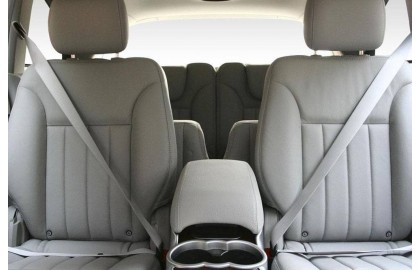Mainstream of car seat belts: three-point seat belts

How car seat belts work
The function of the retractor is to store the webbing and lock the webbing to be pulled out. It is the most complicated mechanical part in the seat belt. There is a ratchet mechanism inside the retractor.
Under normal circumstances, the occupant can freely pull the webbing on the seat at a constant speed, but when the continuous pulling process of the webbing from the retractor stops or when the vehicle encounters an emergency, the ratchet mechanism will act. The locking action automatically locks the webbing, preventing the webbing from being pulled out. Mounting fixtures are lugs, inserts and bolts that are connected to the vehicle body or seat components. Their mounting positions and firmness directly affect the protection effect of the seat belt and the comfort of the occupants.
ELR three-point seat belt
An ELR three-point seat belt is a three-point seat belt with an ELR retractor. This type of retractor, called an Emergency Locking Retractor (ELR), usually allows the belt to be pulled out freely. It is equipped with a shock-sensing device that locks the seat belts in the event of a crash or emergency braking. Generally, the amount of impact is sensed through the deceleration of the vehicle, and the amount of impact is sensed through the pull-out speed of the webbing. The combination of the two methods has become the mainstream.
ALR three-point seat belt
ALR three-point seat belts are three-point seat belts equipped with ALR retractors. This type of retractor is called Automatic Locking Retractor (ALR). Belt retractor. ELR/ALR used in combination with ELR has become mainstream. The ALR works when the seat belt is fully extended, and the ELR works when the seat belt is fully retracted. This method is mainly used for the fixing of child seats.
Seat belts with pretensioners and force limiters
Many mid- to high-end cars are now equipped with seat belts with pretensioners and force limiters. The pre-tensioner is used to eliminate the excess tension margin of the seat belt as much as possible to prevent the occupant from being injured by the exploding airbag. The force limiter reduces the tension of the seat belt after the peak force has passed, so as to reduce the force on the occupant's ribs and shoulders.
